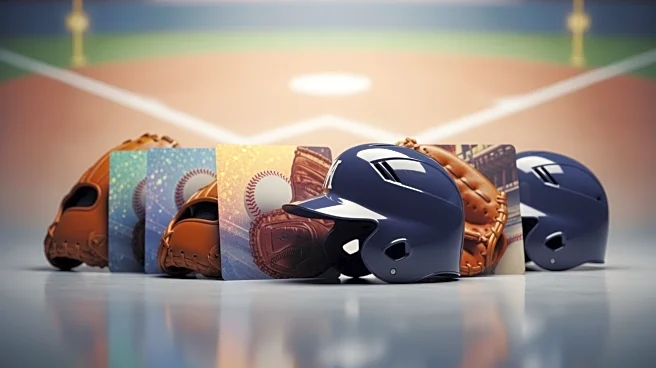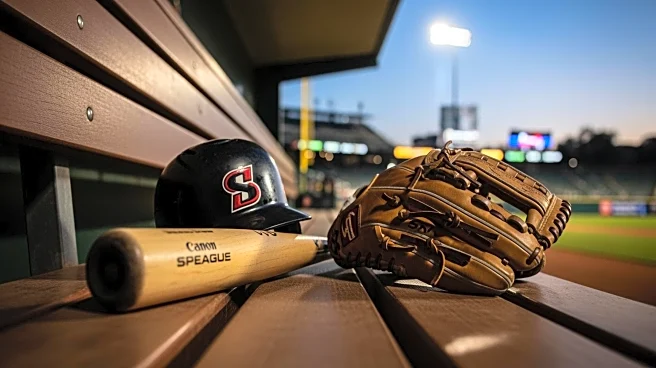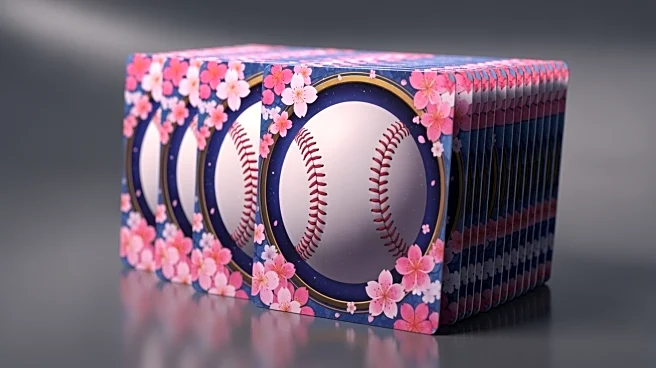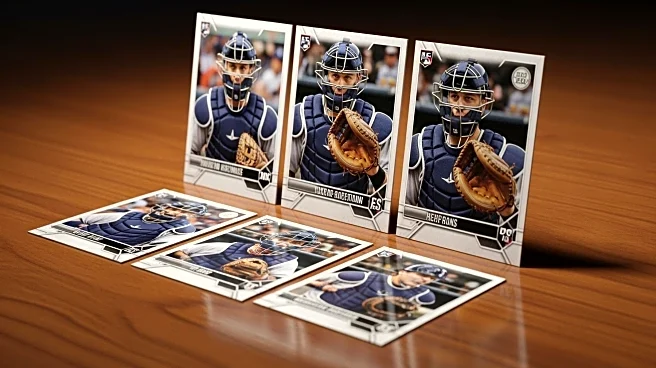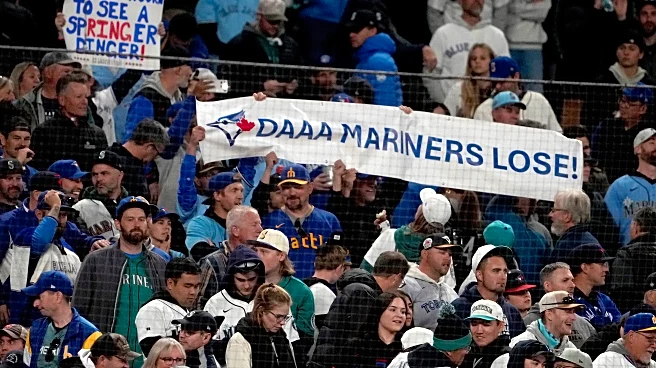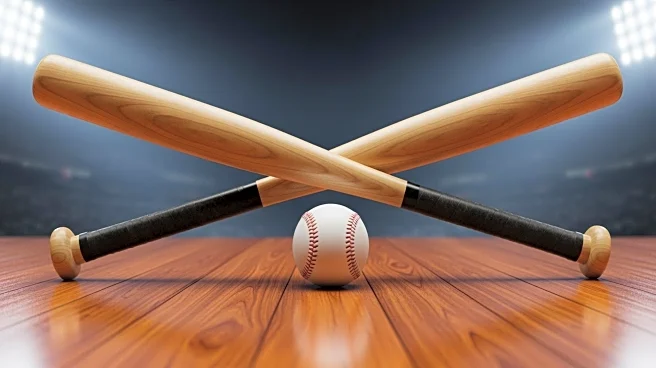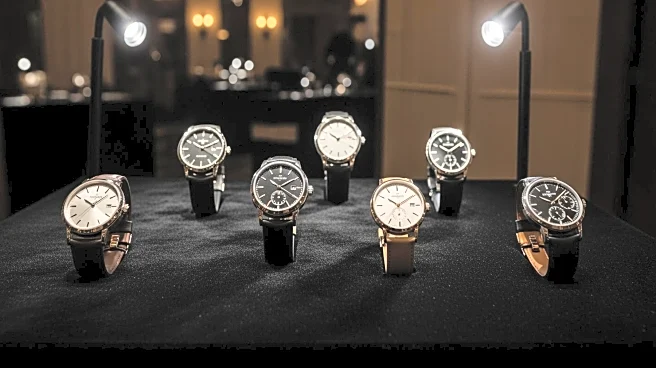What's Happening?
Shohei Ohtani's baseball cards have seen a dramatic increase in value, reflecting his status as a dominant player in Major League Baseball. Ohtani, who is set to win his fourth MVP award in five seasons, has achieved significant milestones, including
a historic 50/50 season with the Dodgers. His cards, once undervalued, have skyrocketed in price, with some selling for over a million dollars. The most expensive card, a 2024 Topps 50/50 Dynasty Black Autograph, sold for $1.067 million, commemorating his unique achievements. Ohtani's popularity extends beyond the U.S., with millions of Japanese fans following his games, further driving demand for his memorabilia.
Why It's Important?
The surge in value of Shohei Ohtani's baseball cards highlights the growing interest in sports collectibles and the impact of player performance on memorabilia markets. As Ohtani continues to break records and gain international fame, his cards become more desirable, attracting both collectors and investors. This trend reflects broader shifts in the collectibles industry, where rare and iconic items can command high prices. The phenomenon also underscores the cultural significance of sports figures and their ability to influence markets beyond the field. For collectors, the rising value of Ohtani's cards presents opportunities for investment and appreciation.
What's Next?
As Ohtani's career progresses, the value of his cards may continue to rise, driven by his performance and popularity. Collectors and investors will likely seek out rare and unique cards, contributing to ongoing demand. The market for sports memorabilia may expand, with increased interest in other players and sports. Auction houses and online platforms could see heightened activity as buyers and sellers engage in transactions. Additionally, the trend may inspire new collectors to enter the market, seeking affordable options and potential future gains.
Beyond the Headlines
The rise in Ohtani's card values reflects broader cultural and economic dynamics, including the globalization of sports and the influence of media coverage. It highlights the intersection of sports, entertainment, and commerce, where athletes become cultural icons and their memorabilia serve as tangible connections to their achievements. The situation also raises questions about the sustainability of high valuations and the potential for market corrections. As interest in collectibles grows, ethical considerations regarding authenticity and fair pricing may become more prominent.
